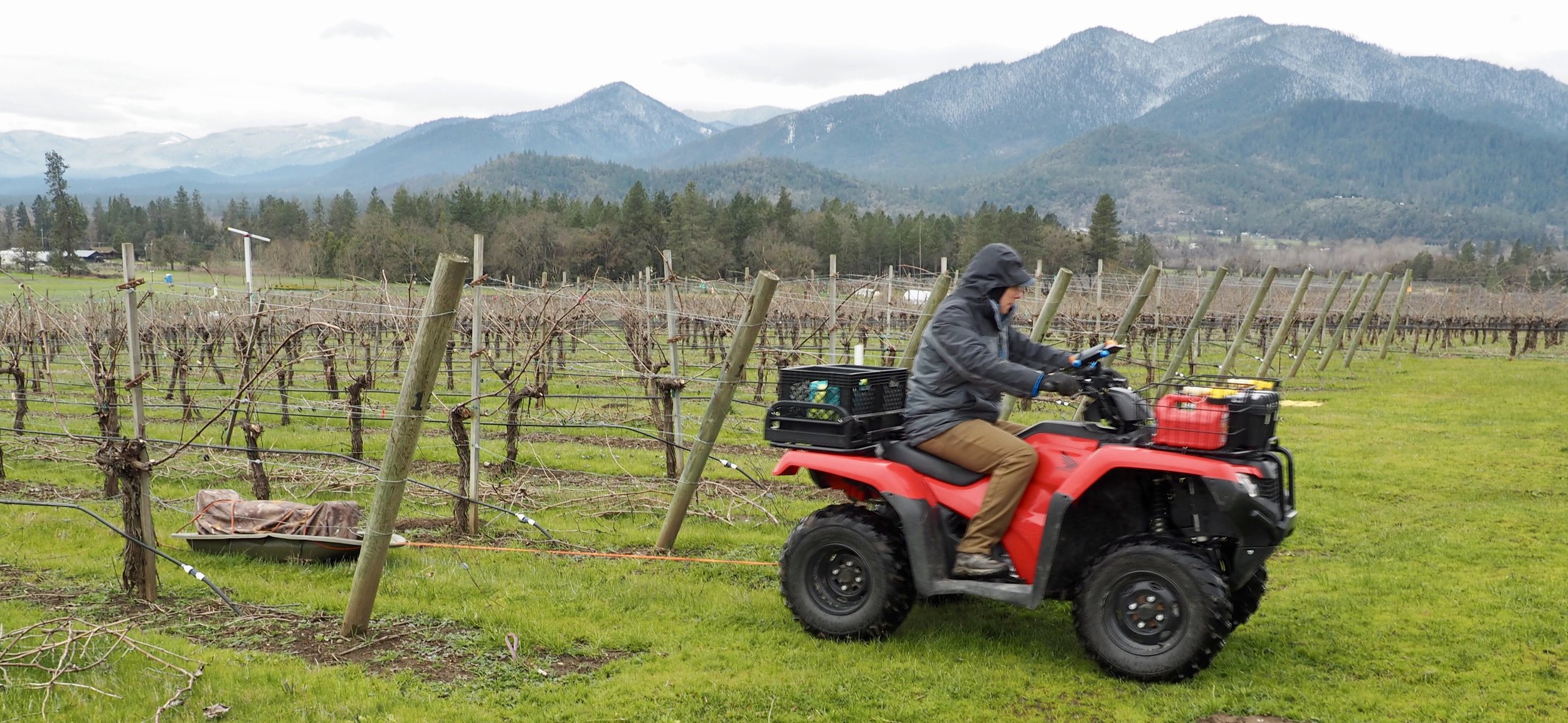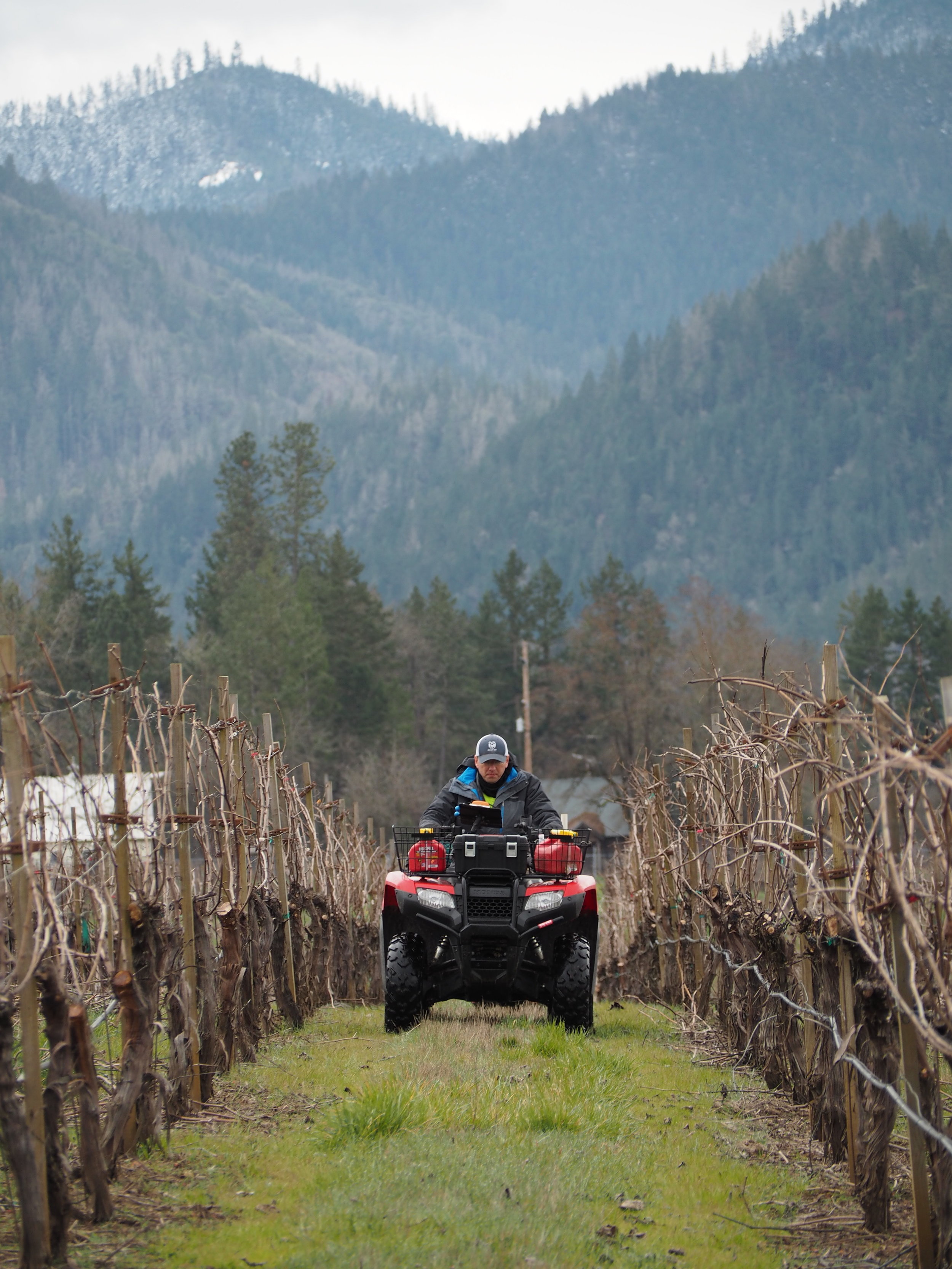Dirt is Not Terroir
It was the early eighties, and I was yet again rereading several chapters of Edmund Penning-Rowsell’s tome The Wines of Bordeaux. I had just spent the day tasting in Graves and Sauternes from the tank and barrel with renowned French wine exporter Christopher Cannan. Now it was night, and I was getter ready for bed in a small, dimly lit guest room above the offices of his company Europvin in the city of Bordeaux. We were visiting the Chateaux he worked with throughout all the appellations of Bordeaux. Each night before sleep I would review the appellations we had visited that day and those we would visit the next. That week long visit to Bordeaux was followed by a week in Burgundy with Becky Wasserman and my nightly reading changed to Burgundy, then a brand-new book authored by Anthony Hanson.
The next year I made a similar trip to Italy. Setting off with famed Italian wine exporter Neil Empson, we visited almost every wine area of Italy to taste at nearly every estate in his extensive portfolio on a three-week tasting marathon. In my bag was a well-worn copy of Burton Anderson’s Vino, the Italian wine bible of the day. My reading pattern was the same as when I was in France, reviewing each night on where we had been and cramming on where we were headed the next day.
I have been lucky over my career to have made multiple such trips to France, Italy, Spain, Germany and Australia. Top that off with many, many trips through the wine regions of California, Oregon and Washington. On each trip I would devour the current wine literature of each region before, during and after each visit.
I was obsessed with wine books and literally would buy and read whatever came out each year and my bookshelves overflowed with dog-eared, wine-stained volumes. This was the era of my life when I was a wine importer and distributor based in Chicago. Then, two decades ago, I made the transition from wine distribution to wine production and my reading list began to change. Slowly but surely instead of reading books about wine, I began reading books about farming. I recently realized this when I noticed that the last five books I’ve read all have the word soil in the title.
Even though my reading materials have changed, I am still as obsessed by the concept of terroir as I was decades ago in that small room in Bordeaux. However, what that means to me has changed significantly.
Those books presented terroir as something magical. That each site is a unique expression of the soil where it was grown. Then you actually start to grow wine and a new reality presents itself.
Take Oregon and Burgundy for example. In the Willamette Valley the soils are volcanic or sedimentary acidic soils. Summers are almost desert-like with no rain for months. Burgundies are grown on alkaline limestone soils and there is rain throughout the growing season. There’s not much in common here except one thing — outstanding pinot noir. Time after time experienced professional tasters find it difficult to tell which wine is Willamette Valley and which is Burgundy.
Burgundy and the Willamette Valley are not alone in this for the same experts can confuse California and Washington Cabernet with Bordeaux and California Coast and Oregon Syrah with Rhône wines. Each of these areas are very different from each other. How it is possible that all can produce wines whose provenance confuses the experts?
The reason is we have always made the cornerstone of terroir the type of soil the vine grows in — limestone, volcanic, granitic, sedimentary and so on. But it turns out that it’s not the exact type of soil that matters as much as the life in the soil itself. It has been this realization that changed my reading from wine books to soil books.
Terroir is not an expression of inert dirt, it is the individual expression of living soil and how a healthy plant intertwines with that soil. Dirt is not always soil. Soil is a system teeming with life.
Obviously, there are distinct sites. Terroir is a combination of many things. Climate and mesoclimate are critical, then there is the human element — row spacing, trellising and picking the right variety for the right place. For example, planting cabernet in a cool climate and pinot in a warm climate is not a great idea. But it takes grapes grown on healthy vines on living soils to make an expressive wine with a distinct character.
What makes for a living soil? Here is where you find the reason that biodynamic wines have a unique liveliness that stands out. Sustainable agriculture is not enough. That only means that you are killing the life in your soils more slowly than industrial agriculture. It is only with regenerative agriculture that you can build soil that creates distinctive, individualistic wines.
Plants and the microbiology in the soil have a complex symbiotic relationship. The plant takes a large percentage of the carbohydrates it produces through photosynthesis and pushes this exudate out through its roots to attract the microbes it needs to extract nutrition from the soil. It can change the mix of exudates depending on its requirements at the moment. A healthy plant decides the microbiology in the soil by the mix of gourmet microbe treats it sends out through its roots. That microbiology then returns the favor by processing the nutrients in the soil into a form the plant can utilize. The healthier the plant, the healthier that microbiology becomes. The healthier that microbiology becomes, the healthier the plant becomes. Not a bad system.
Then we come in and screw it up. The application of pesticides, fungicides and fertilizers destroys nature’s well-tuned system. In that system is to be found what makes a vineyard unique. It is an essential element of what we call terroir. The grapes that make distinctive wines come from vines in vineyards where nature’s system is humming along. Our job as farmers is to assist the plant and soil in regenerating that balance year after year. This is vital when you have a perennial crop like vines that do not lend themselves to crop rotation.
Coming back to the Willamette Valley and Burgundy comparison, perhaps their shared qualities come more from the life in their soils than their geological provenance.
I still read before and after vineyard visits. However, these days they are not wine books, they are soil books. It is in the soil you find great wine.



